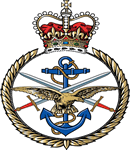 |
Battle or Action:
HMS Flirt, Sinking of
|
 |
Detail : |
| British Navy, destroyer; 1900; Palmer & Co.; 335 tons; 210X 21x11; 5,700 i.h.p.; 30 knots; triple-expansion engines; Thorny croft boilers; one 12 pdr., five 6pdr., 2 T.T. On October 23rd, 1916, the Admiralty became aware that the German naval command was preparing a sortie by light forces which might have for its aim a raid upon the defences of the Straits of Dover. It was known that Capt. A. Michelsen, commanding the destroyer flotillas of the High Seas Fleet, was leading the 3rd and 9th flotillas, of 24 destroyers in all, down the Dutch coast toward Zeebrugge. Vice-Admiral Sir R. Bacon, commanding the Dover patrol, therefore disposed the forces under his command to meet the threatened attack, which came on the night of October 26th, in the area bounded by a line drawn from Dover to Calais on one side and from the Downs to Dunkirk on the other. The destroyer Flirt, a small and old ship commanded by Lt. R. Kellett, left Dover about 8 p.m. and two hours later, hearing gunfire in the direction of the line of drifters guarding the submarine barrage, made towards it. Here she found the drifter Wayeney II on fire, and at once lowered a boat to go to her assistance. At the same time a destroyer line came into sight, but gave no grounds for action as it was presumed to be French. Shortly afterwards these ships opened fire on the Flirt and sank her with every man on board, the boat's crew being the only survivors. The official complement of the Flirt was 80. The German flotillas, after damaging the destroyer Nubian and sinking one or two drifters, returned to their base without loss. See Kent History Forum |
|
FIRST PREV ( Page 1 of 1 ) NEXT LAST
|